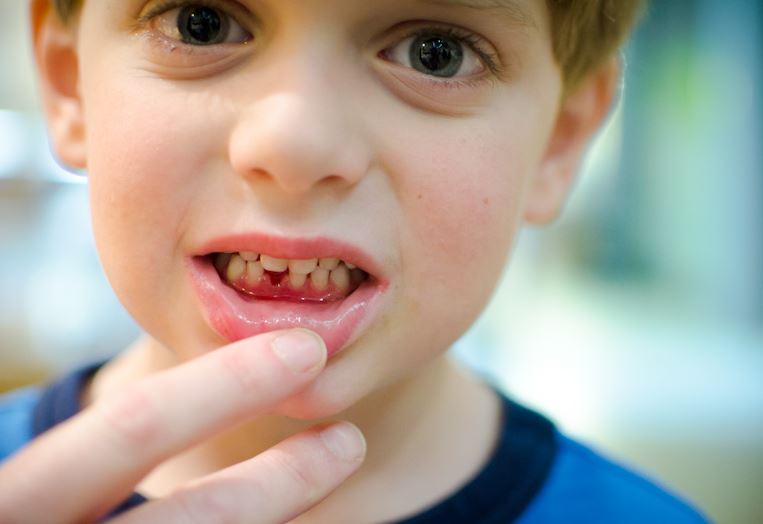
For most kids, losing their first tooth is a milestone worthy of celebration. Some fall out easily, and others can present a minor struggle. Parents understandably worry that pulling out a child’s baby teeth prematurely might hurt, or might be afraid that if their child loses a tooth while eating, they might accidentally swallow it. And while some children are impatient to get loose teeth out of their mouths, others want to hold onto it because of their fear of pain. The good news is, if children are given control over when they pull out their teeth, the process could be mostly painless.
The Right Age
Baby teeth start falling out around the age of six. The first ones to go are usually the incisors, which are near the front. As adult teeth start to form, the roots from the baby teeth are absorbed by the body, and baby teeth are left on by a small amount of connective tissue. As the adult teeth grow, the baby teeth become looser.
In many cases, a child will end up removing their own tooth by pushing their tongue against it, or by rocking it back and forth with their fingers. In these cases, the tooth will simply fall out, and there is no pain. If a tooth seems to be a little bit more stubborn, parents can encourage helping it along by using a tissue and giving it a quick twist. There might be a small jolt of pain, but this quickly dissipates.
Encouraging Right
The best case scenario is when baby teeth fall out on their own. Parents should encourage kids to use their tongues to move it back and forth and loosen it up a bit more before pulling. If after a few days the tooth is still in the mouth, parents can show their children how to use a soft cloth to squeeze the tooth and gently move it back and forth. If they feel a lot of resistance in their tooth, it means it’s not quite ready to come out. But if it’s hanging on by a thread, likely a quick jerk is all that is needed.
Pulling Their Own
While it may be tempting for parents to reach in and pull teeth out, letting children do it themselves is often better. One reason is because children can assess how much it hurts. They know how loose their tooth really is and can pull their own tooth with a lot less pain than a parent could. Trust them to make the right judgement and let them know that even if it hurts a bit, it won’t be forever.
The Tooth Is out, Now What?
In most cases, the only complication associated with pulling out a baby tooth is a bit of bleeding. Pressure to the area with a little gauze can make it stop quickly. However, if there are tooth fragments still in the gums, they should not be removed. It is better to visit a family dentist and have them remove everything carefully. Once the tooth is removed, parents should keep a close watch on their child’s gums. As with any cut in the body, the small tear where the tooth was removed can lead to infection. This is something that rarely happens, but if it does, a dentist should inspect it.
For most children, losing their baby teeth is all part of growing up. Once one tooth falls out, others quickly follow and it’s not a big deal. For others, pulling teeth can be a hassle or even traumatic. Make sure your child has the skills needed to assess their own mouths and make sure they can pull their own teeth.

